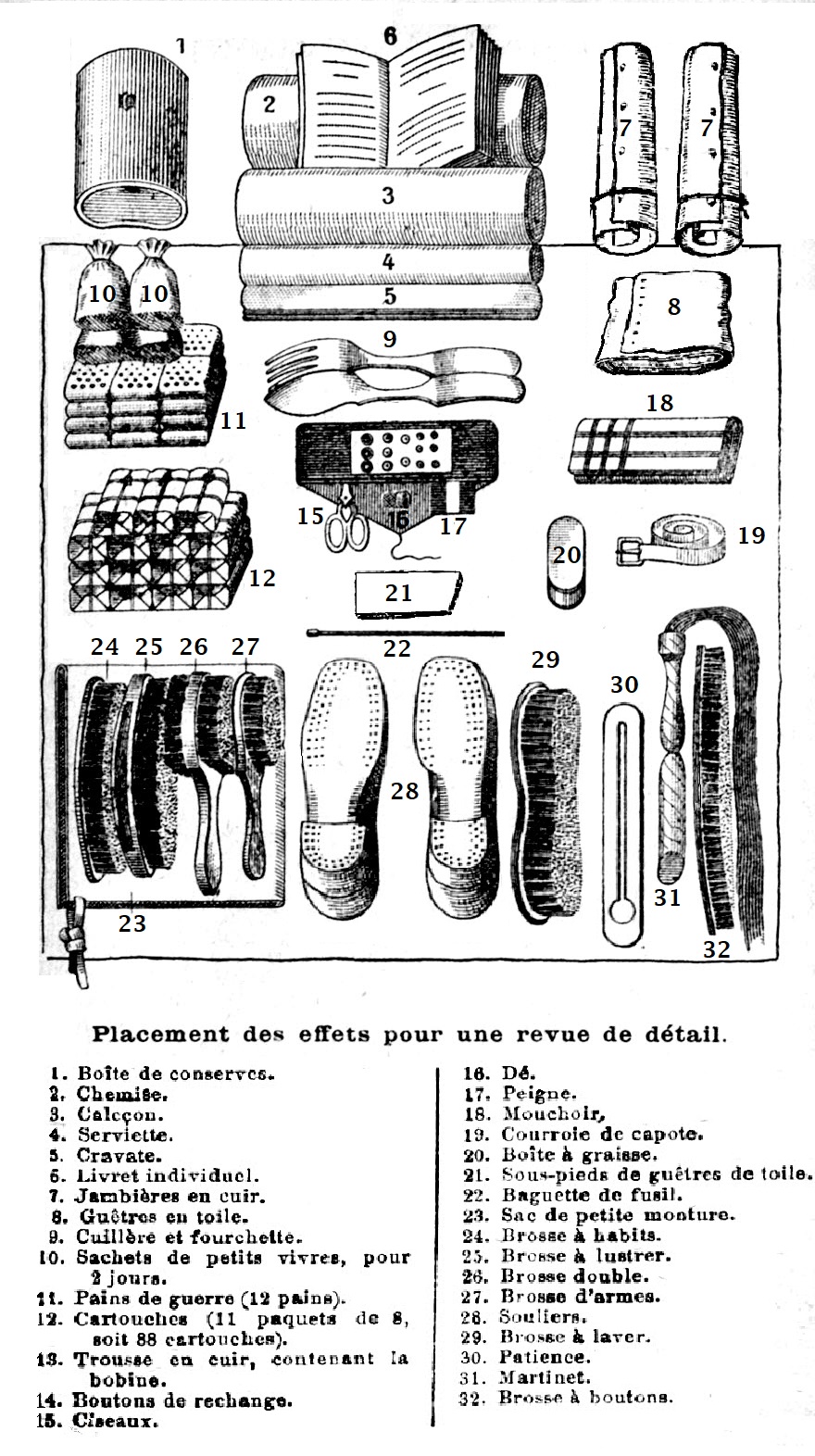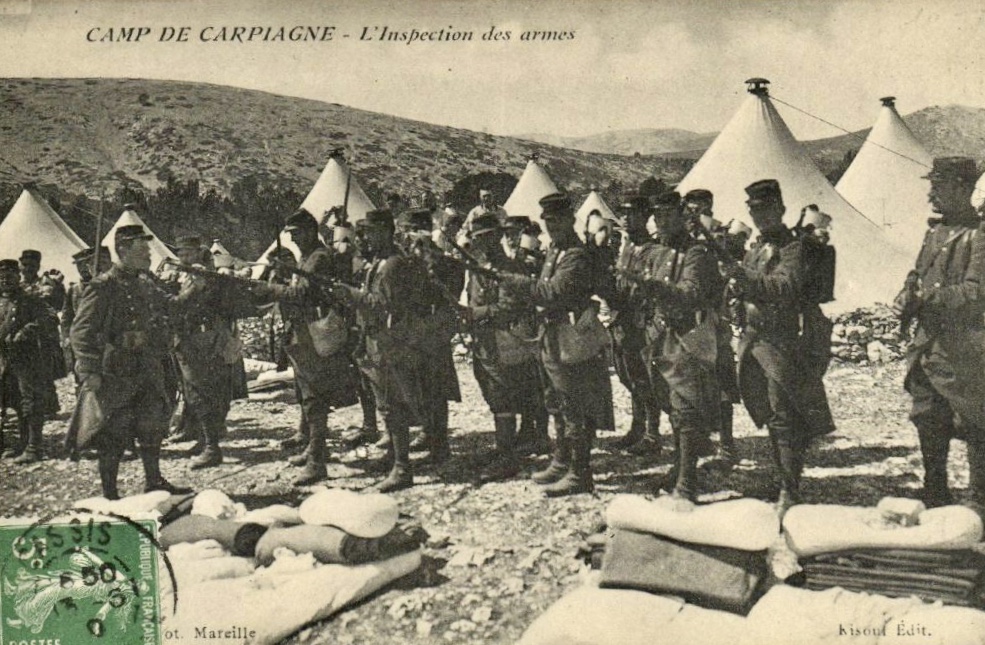Inspections - Equipment, Clothing and Arms
Under Construction...The following information is taken from the L'Infanterie en un volume. Manuel d'instruction militaire à l'usage des élèves-caporaux, sous-officiers, élèves-officiers de réserve candidats aux écoles de Saint-Maixent ou de Saint-Cyr. Nouvelle édition refondue et mise à jour ("Infantry In One Volume. Military Instruction Manual for the Use of Corporal-Candidates, NCOs, Officer-Cadets, etc."), both 1914 and 1915 editions.
REVUE DE DÉTAIL
("Detailed Review")

Arrangement of Effects and How to Present Them for an Inspection.
The purpose of the detailed reviews is to note:
1) The full set of various effects and their condition;Whoever carries the inspection stops in front of each man and reviews all his effects. The clothing, large equipment and headwear of the man can also be presented successively by all the men. The effects must be seen on the man to ensure their external cleanliness, then the hand, sleeves and pockets (turned out) are presented. Men are required to put their fists at the opening of the sleeves and fold their arms across, this allowing for easy inspection.
2) The regularity of the marks applied to the effects;1
3) The consistency of these marks with the inscriptions in the individual soldier’s booklet.
Placement of effects for a detailed review.
The various effects are arranged on each soldier's bed in the following order, starting from the foot of the bed:
1) small equipment, ammunition, weapons kit, the knapsack (the straps rolled and the flap folded forward);
2) clothing effects and haversack resting on the body of the knapsack, arranged in the same order as on the baggage shelf (from top to bottom: tunic, trousers, jacket, greatcoat, haversack, canvas work trousers, work blouse); the epaulettes, the body flat on the work blouse, the fringes hanging off the side of the foot of the bed, surmounted by the second headwear;
3) large equipment: cartridge pouches empty, the belt with the belt plate on the right, the bayonet carrier, the rifle sling or revolver holster; the suspension braces.
4) arms: the bayonet in its scabbard; the rifle or revolver (when the rifle remains mounted, it is leaning, fitted with the bayonet in its sheath, against the wall, at the head of the bed);
5) portable tool, its case, pennants and signaling lanterns;
6) camping utensils, in the same line;
7) crate and its accessories or the bugle.
1 For information on the correct placement of markings on clothing and equipment, go to the Common Stamps and Markings page.
INSPECTION DES ARMES.
("Inspection of Arms")

NOTE: The inspection of arms and cartridges is done before and after any exercise involving the use of cartridges. It is always performed before leaving the field.
Inspection,
[DES] ARMES.
Assume the position of CHARGEZ, return the squared button to its rear position, holding the weapon at the small of the stock.The commander successively inspects each weapon and ensures that there are no cartridges left in the magazine, checking whether the piston collar is showing at the opening of the tube-stop, and if any foreign body is in the barrel or in the chamber.
Once the commander arrives before him, each soldier quickly opens the bolt twice in a row. Upon completion of the inspection, he returns the checkered button to its forward position, closes the breech, disarms and returns to the position of l'arme au pied.
Notes for the Officer or NCO conducting the inspection:
Before each firing practice, the NCOs must ensure that the bolt and repetition mechanism are functioning well. Attention must also be paid to: 1) the barrel has no blockages or foreign bodies present; 2) the chamber is oily to the touch and there are no rough spots in the opening; 3) the lodging lugs (logement des tenons) of the mobile [bolt] head and the circular extractor lodging (aminici circulaire) are perfectly clean.
After firing, NCOs ensure that no weapon is loaded and that no cartridges remain in the magazine.
Proper Equipping
Order in which equipment is put on:
For further details on how to wear the uniform and equipment, please go to Wearing Your Kit Correctly page.





